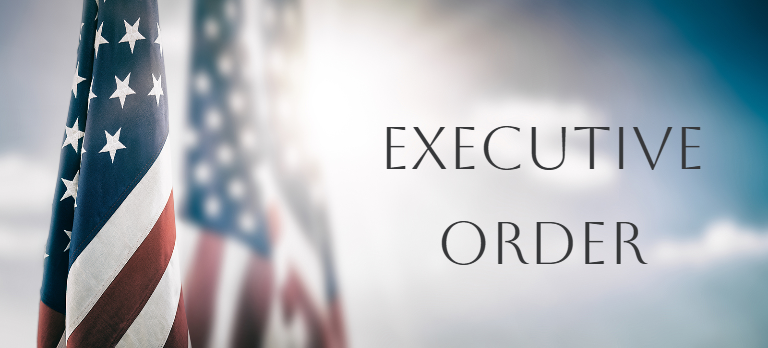Executive Orders (EOs) may be dominating today’s headlines and political activity, but their use is as old as the presidency. George Washington issued the first Executive Order on June 8, 1789, two months after being sworn in. In a letter, he asked executive department heads to provide “a full, precise, and distinct general idea of the affairs of the United States” they oversaw. Since that first order, every president, except for William Henry Harrison, who died of pneumonia shortly after his inauguration, has utilized this tool to advance administration goals.
While not specifically detailed in the Constitution, Executive Orders are legitimate tools of government, based on wording in Article II that gives the president executive power over the government and the obligation to ensure that “the laws be faithfully executed.” These orders are directives to agencies but cannot be treated as or override federal laws and statutes.
The impact and importance of executive orders varies greatly. Some (like Washington’s first) are administrative directives, some declare federal holidays (like Washington’s second EO in 1789, declaring a national day of Thanksgiving on Thursday, November 26), and others have had lasting impacts on society. The Emancipation Proclamation was an EO issued by Lincoln. EOs mandating integration of the military and federal contractors were issued by Franklin Roosevelt, Harry Truman, and Lyndon Johnson.
Numbering of Executive Orders began in 1907 by the Department of State, which went back retroactively to 1862. The Federal Register Act in 1936 implemented the modern documentation of Executive Orders. Each order now receives a number along with a descriptive title. Franklin Roosevelt issued the most executive orders, at 3,726, which included possibly the most controversial EO, the order to force the relocation of Japanese Americans and to intern them in concentration camps.
From society altering to mundane, Executive Orders provide a swift tool for presidents to enact policy change and drive forward agendas, but they are subject to checks and balances. Harry Truman’s Executive Order 10340 seized control of U.S. steel mills during the Korean War, but it was overturned by the Supreme Court as unconstitutional. Bill Clinton’s EO 12954, which banned federal government contracts with organizations that employed strike-breakers, was overturned because it conflicted with the National Labor Relations Act.
Over 160 Executive Orders have been issued in 2025. GovWhitePapers has collected some of the key EOs that impact how the government does business. The subjects of the 2025 EOs range from immigration, technology, education, and government procurement.
Here’s a snapshot of, and explainers for, several of these recent executive orders:
- EO 14222: Implementing the President’s ‘‘Department of Government Efficiency’’ Cost Efficiency Initiative – This EO is focused on transforming “Federal spending on contracts, grants, and loans to ensure Government spending is transparent and Government employees are accountable to the American public.” This included an initial freeze on travel and a mandate that agencies implement an online system for employees to submit “written justification for … [non-essential] federally funded travel” to facilitate travel authorizations moving forward.
- EO 14271: Ensuring Commercial, Cost-Effective Solutions in Federal Contracts – This EO encourages the procurement of commercially available products and services over that of non-commercial, custom options. It urges agencies to align more closely with the long-standing Federal Acquisition Streamlining Act (FASA).
- EO 14275: Restoring Common Sense to Federal Procurement – In an effort to streamline government procurement processes, this order directs the revision of the Federal Acquisition Regulation (FAR), the guiding document for businesses offering goods and services to the government. The EO ordered an overhaul of the FAR with plain English and the elimination of non-statutory and duplicative regulations.
- EO 14306: Sustaining Select Efforts to Strengthen the Nation’s Cybersecurity and Amending Executive Order 13694 and Executive Order 14144 – This EO revised previous cybersecurity guidance from the Biden and Obama administrations. Specifically, the guidance served to strip mandates seen as overly prescriptive or ideological. It also introduced new guidelines and mandates to strengthen cyber practices within the government and private sector, including calls for the creation of a security certification program, government agency standards for post-quantum cryptography, and the availability of datasets for artificial intelligence (AI).
- EO 14319: Preventing Woke AI in the Federal Government – This order addresses the impact of ideological biases in AI systems, especially large language models. This order specifically calls out Diversity, Equity, and Inclusion concepts and prohibits federal procurement of AI that “sacrifices truthfulness and accuracy to ideological agendas.”
A full list of recent Executive Orders is available on GovWhitePapers, along with additional resources that can help guide further understanding of and compliance with these orders.










